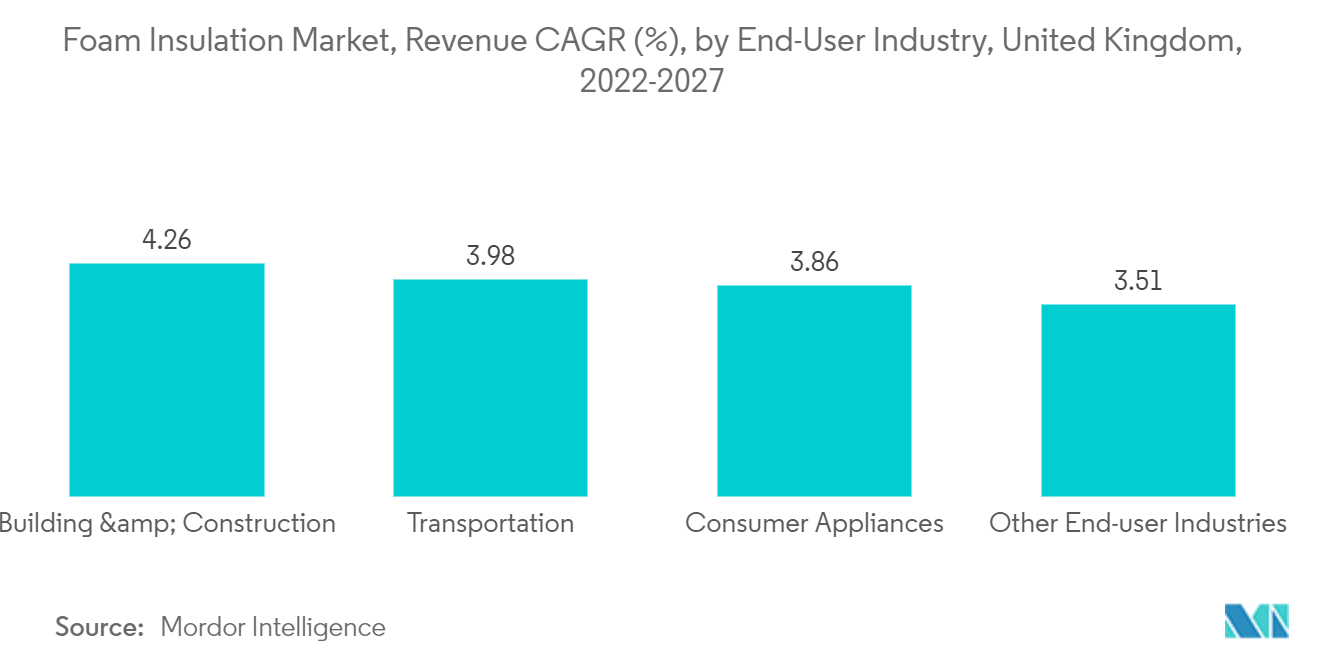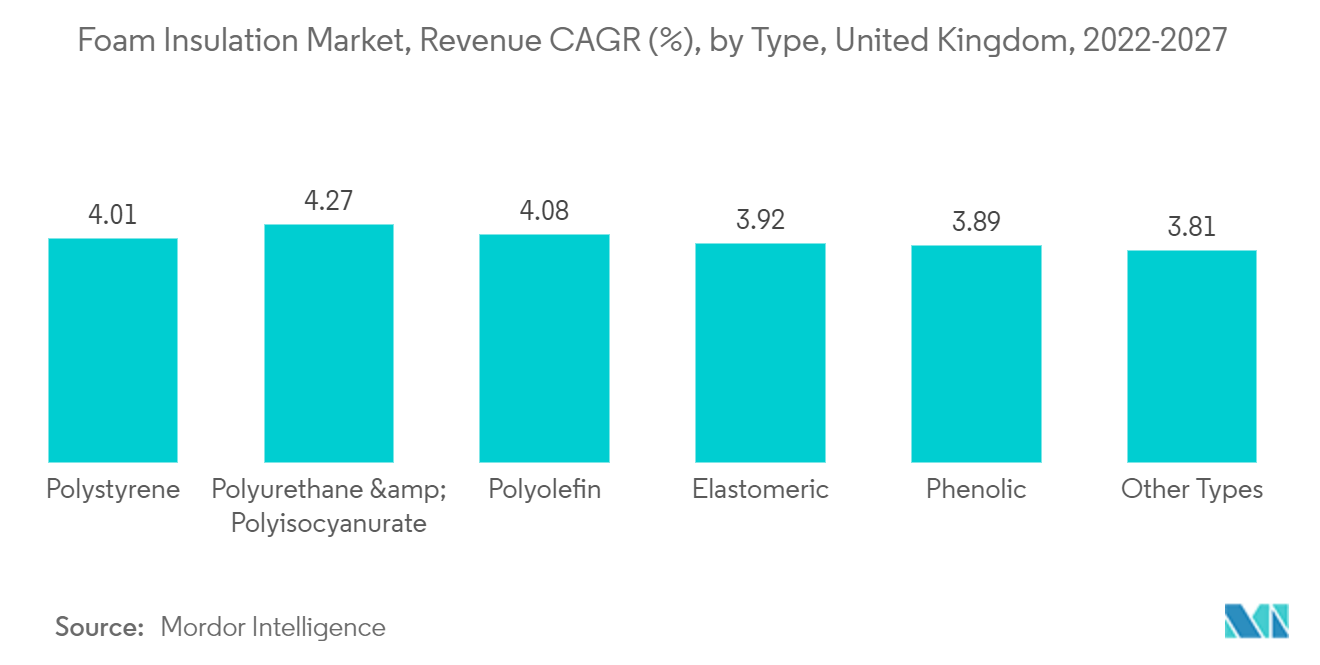Market Trends of United Kingdom Foam Insulation Industry
This section covers the major market trends shaping the UK Foam Insulation Market according to our research experts:
Increasing Usage in the Building and Construction Segment
- With the increasing shift towards reducing greenhouse emissions and the overall carbon footprint, the government of the United Kingdom has been introducing schemes and insulation grants to help households reduce their electricity consumption and save up money on electricity bills.
- Post-pandemic, the building & construction industry has been gradually picking up pace. According to the Ministry of Housing, Communities and Local Government (UK), new housing unit construction in the United Kingdom increased to 42,350 units in the first quarter of 2022 from 41,600 units in the fourth quarter of 2021.
- The monthly construction output increased by 1.5% in volume terms in May 2022 compared to April 2022, stated the Office for National Statistics (UK). This is the seventh consecutive monthly growth following the upwardly revised increase to 0.3% in April 2022. May 2022 marked a record high in monthly-level terms (GBP 15,053 million) since last decade.
- With foam insulation being extensively used in the building and construction industry, the abovementioned factors are expected to drive market growth during the forecast period.

Higher demand for Polyurethane and Polyisocyanurate Foam
- Polyurethane Rigid Foam (PUR) and Polyisocyanurate Rigid Foam (PIR) are very close in chemical composition as both are polyurethane derivatives. PIR was created by improving PUR's thermal stability and flame resistance.
- PUR insulation has high water resistance and can be injected into small spaces to create an air-tight seal. It can also provide an energy-efficient barrier if injected into wall cavities. According to the Insulation Manufacturer Association, PUR delivers 'the best thermal performance of all practical fully cavity insulants.' It is also less expensive, making it ideal for continuous spraying for renovation purposes. Since PUR does not hold water, it is an ideal choice for flood-prone areas as it can minimize the damage through water impact in wall cavities.
- On the other hand, PIR can be typically cut into boards and used in insulated metal panels, wall cavities, and as insulated plasterboard. The thermal performance of PIR is higher when compared to its counterparts, so it requires only half the thickness of other mineral-based insulation products.
- The most advantageous factor of PIR is its high flame and smoke resistance compared to PUR products, which slows down the spread of flames and reduces the smoke emitted in case of a fire outbreak.
- As per the factors mentioned above, the demand for PUR and PIR insulation is expected to be relatively higher than its counterparts, thus driving the market growth.


